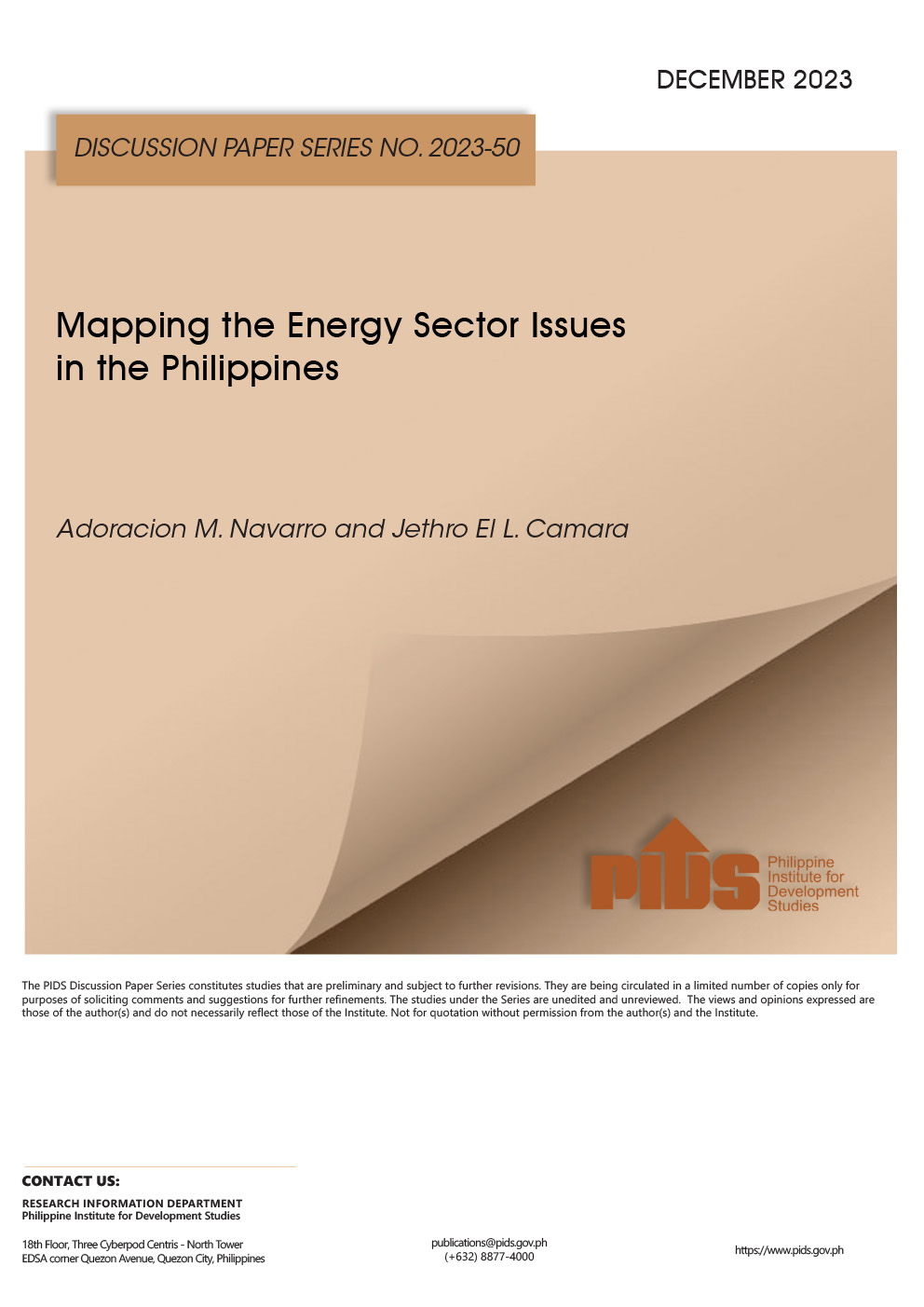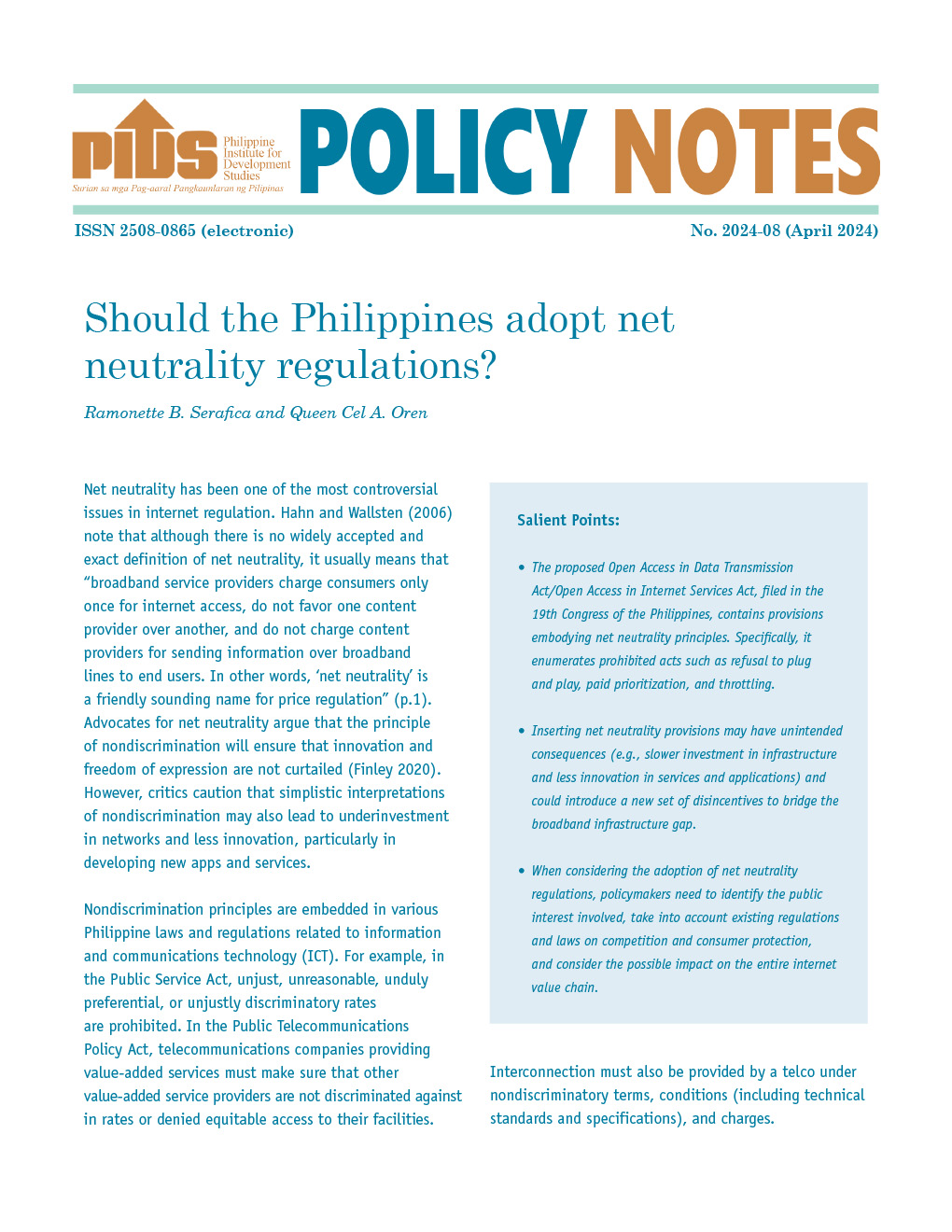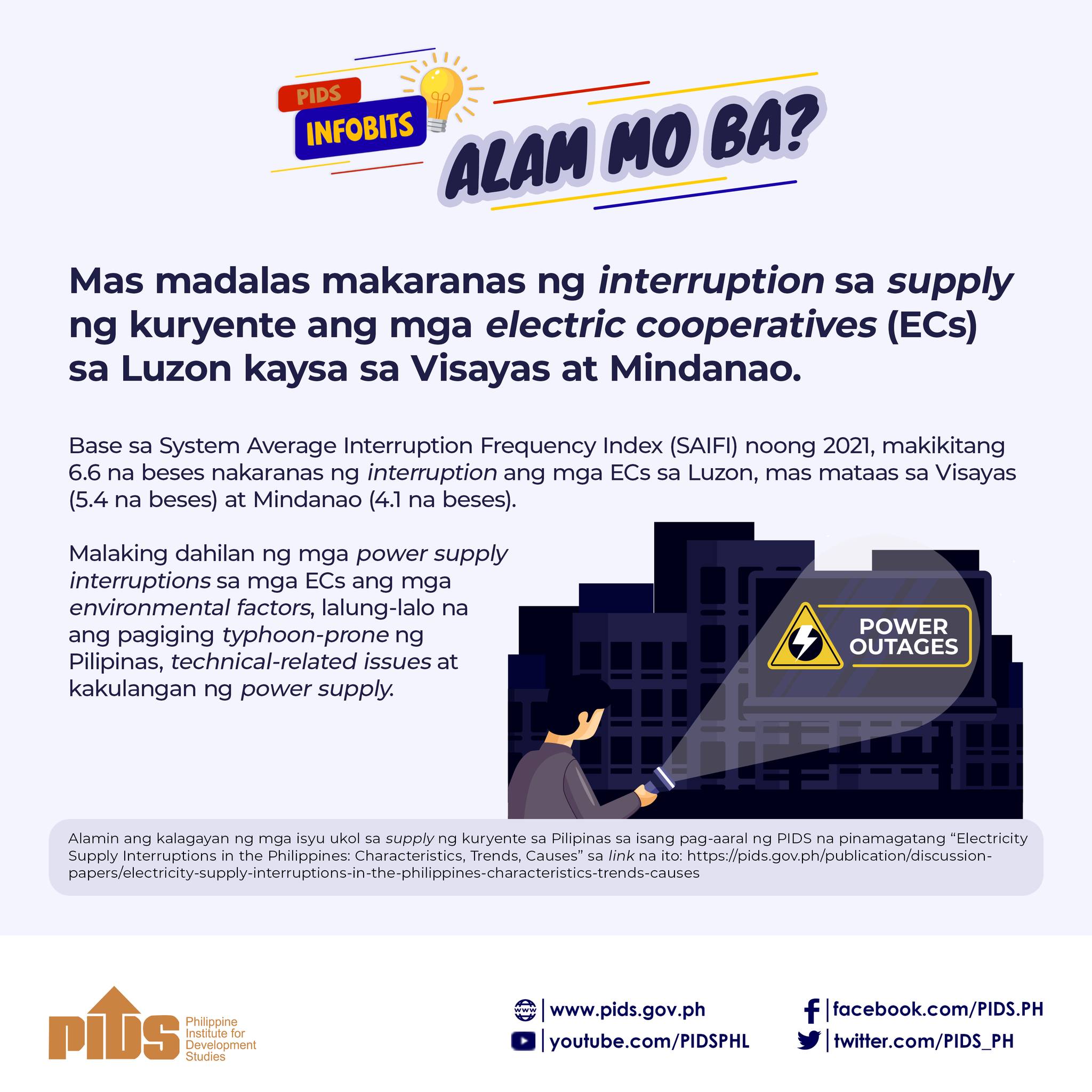Power interruptions caused by natural calamities like storms, earthquakes, and lightning have cost the country 107.5 million consumer hours in 2021, the Philippine Institute for Development Studies (PIDS) said in a study.
This entails a 10% increase from the 97.2 million consumer-hour recorded in 2015, PIDS research fellow and “Electricity Supply Interruptions in the Philippines: Characteristics, Trends, Causes” author Kris Francisco said in a statement.
In the study, electric cooperative customers experienced an average of 5.7 power interruptions or 8.8 hours of no power in 2021, indicating that Luzon encountered more frequent power interruptions in Luzon, while Visayas experienced longer power outages.
Francisco said that the power outages were caused by supply, technical, environmental, or “interruptions due to natural events” like storms, and other issues that cover “prescribed” or unspecified problems in the monthly interruption reports.
Extended power outages in relation to storms and other environmental-related factors were more frequent in Luzon, the study indicated.
“This is quite concerning given that the Philippines experiences numerous typhoons a year. Concurrently, this begs the need to improve and climate-proof our power and electricity-related infrastructure to protect them from damages and shorten the duration of weather-related downtime,” Francisco said.
The country’s power supply also remains insufficient, Francisco said.
Policies give little attention to improving the reliability of electricity supply. The fast-growing electricity demand is causing stress during peak-power demand months, resulting in widespread blackouts and electricity supply interruptions,” the PIDS author said.
In its 2023 power outlook, the Department of Energy (DOE) said that the Luzon Grid may face 12 yellow alerts this year, particularly during the summer months.
The PIDS study recommended prioritizing the climate-proofing of power and electricity-related infrastructure and creating policies that would expand EC’s access to more power supply and generation capacity.












